You’re walking along some bushes in a park, and suddenly see a tiny gray creature skittering into the fallen leaves. At first you might think it’s a rodent, but this frenetic ball of energy is actually a shrew.
While it may appear small and gray, shrews are one of the most voracious mammalian predators on the planet. And they’re abundant and widespread, found on five continents in a variety of habitats. In the United Kingdom, there are an estimated 50 shrews per hectare in woodlands, with a country-wide population of more than 40 million shrews. The northern short-tailed shrew may be the most common mammal of the eastern United States.
Soricidae, the shrew family, contains more than 385 species. Superficially, many of these species look similar, with most having pointy snouts, a streamlined body and a grayish coloration. But they exhibit a diversity of behaviors. Even though they’re common and widespread, few people see them and fewer know their crazy habits and adaptations.
Let’s take a look at just some of the many reasons to marvel at shrews.
-
Life in the Fast Lane
If you’re lucky enough to see a shrew, you’ll notice that it’s moving rapidly, with rapid, jerky movements. This isn’t because you scared it; shrews just live life fast and furious. Your most highly caffeinated, Type A colleague will appear downright slothful compared to a shrew.
While this varies among species, a shrew’s heart rate beats 800 to 1000 times per minute. The Etruscan shrew, the smallest terrestrial mammal on earth, has a heart rate that can reach 1500 beats per minute, more than any other mammal and more even than the hummingbird.
Shrews have been recorded making 12 body movements per second. (Go ahead and try to duplicate this feat). They’re in constant motion, rarely stopping to sleep. They have a high metabolism, which means they have to eat. A lot.
A shrew’s life is a constant search for prey. Many species must eat their body weight’s worth of food each day. (I advise you not to attempt this one). If a shrew doesn’t eat within a few hours, it dies. This constant need for food has led to some truly bizarre and even disturbing adaptations.
-
Watch Those Whiskers
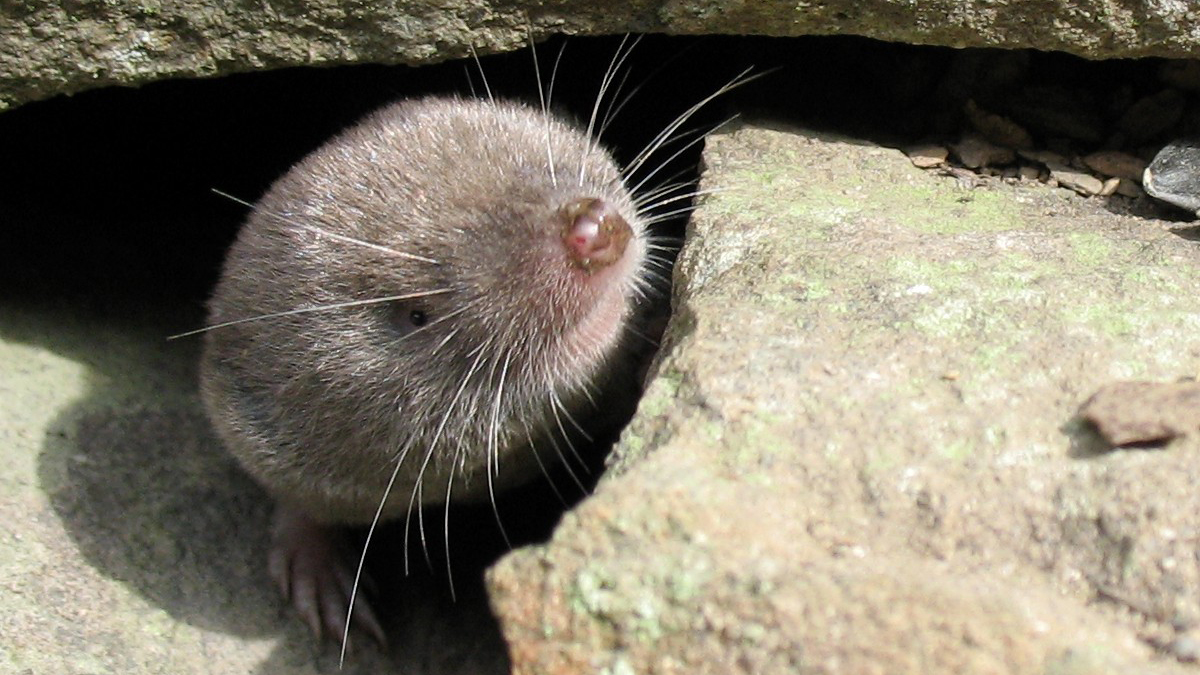
Northern Short-tailed Shrew. Photo © Gilles Gonthier / Flickr Shrews must find and subdue prey fast. They have poor eyesight and often live in thick cover filled with obstacles. How do they manage?
Many sources mention that some shrews use echolocation: they emit sounds producing sonar that helps them navigate their world (much like bats). Shrews emit a sound described as a “twitter” and it is often assumed this is used in echo-location. However, much of the evidence appears anecdotal. An article in the journal Biology Letters found “shrew-like calls can indeed yield echo scenes useful for habitat assessment at close range.”
There isn’t evidence that this echolocation is used to find prey. Instead, shrews rely on their long, highly sensitive whiskers, also known as vibrissae. According to a study published in Philosophical Transactions B, the Etruscan shrew hunts in an environment where crickets are particularly abundant. It moves its whiskers constantly – a motion called, appropriately enough, whisking – until it brushes its prey. Then it strikes quickly and with great precision.
Of course, wasting time attacking non-prey items that the whiskers brush against would burn precious energy. The researchers conducted an intriguing test:
“Experiments with dummy prey objects showed that shrews attacked a plastic replica of a cricket but not other plastic objects of similar size. Altering the shape of crickets by gluing on additional body parts from donor animals revealed that the jumping legs but not the head are key features in prey recognition.”
-
Shrew Venom, A Horror Story
You can spend way too much time on YouTube watching videos of shrews attacking mice, scorpions, snakes and other larger creatures. Spoiler alert: the shrew wins.
This is because many shrew species are venomous. Research has found that an individual shrew stores enough venom to kill 200 mice. Some shrews also use this venom for something called live hoarding.
Live hoarding sounds innocuous enough, but in reality it shares numerous plot points with that terrifying movie Hostel. Here’s how it works.
The shrew lacks hollow fangs (as in venomous snakes) but instead has a gland that allows saliva to flow with the venom. When the shrew encounters its prey – often an invertebrate, but it can also be a mouse or other vertebrate – it begins biting it, allowing the venomous saliva to flow into the wound.
For the prey, this is the beginning of a very bad day. The venom paralyzes the creature, but keeps it very much alive. The shrew can then move it to a cache, available for whenever hunting is not going so great. For an animal that has to eat constantly, this keeps a fresh if unsavory meal always at the ready.
The American Chemical Society reports that a mealworm can be kept, paralyzed but alive, for 15 days.
Shrew bites on humans are reportedly painful but fade in a few days. Be very, very glad these animals are not larger.
-
Following the Herd
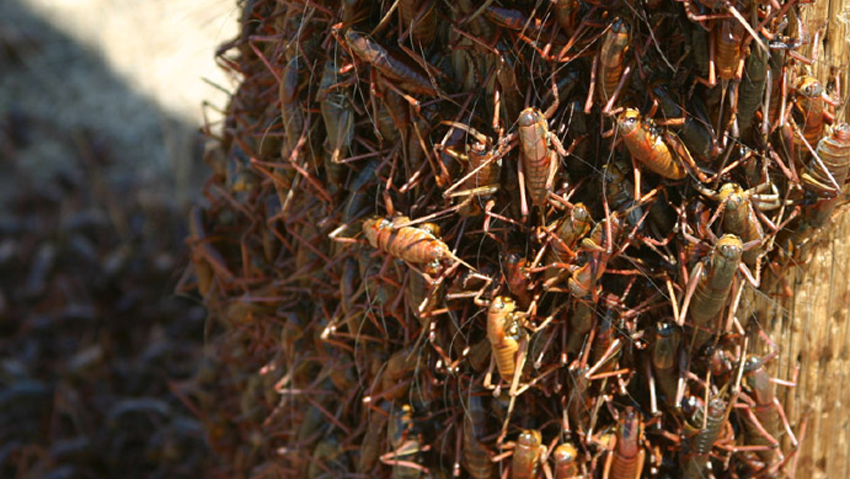
Mormon crickets in Nevada, 2006. Photo © katie madonia / Wikimedia Commons through a CC BY 2.5 license In the sagebrush country of the western United States, one species of shrews may follow the thundering herds … of Mormon crickets. Mormon crickets (actually a species of katydid) are prone to periodically have population explosions resulting in large swarms.
Vladimir Dinets, in the Peterson Field Guide to Finding Mammals, includes this intriguing description: “On arid plains these shrews follow swarms of Mormon crickets the same way Gray Wolves follow migrating Caribou herds. If you encounter a swarm, look for shrews scurrying along its tail edge.”
Dinets’ book, by the way, is like a shrew spotter’s bible, including tips on where and how to seek all the North American species.
-
Walking on Water
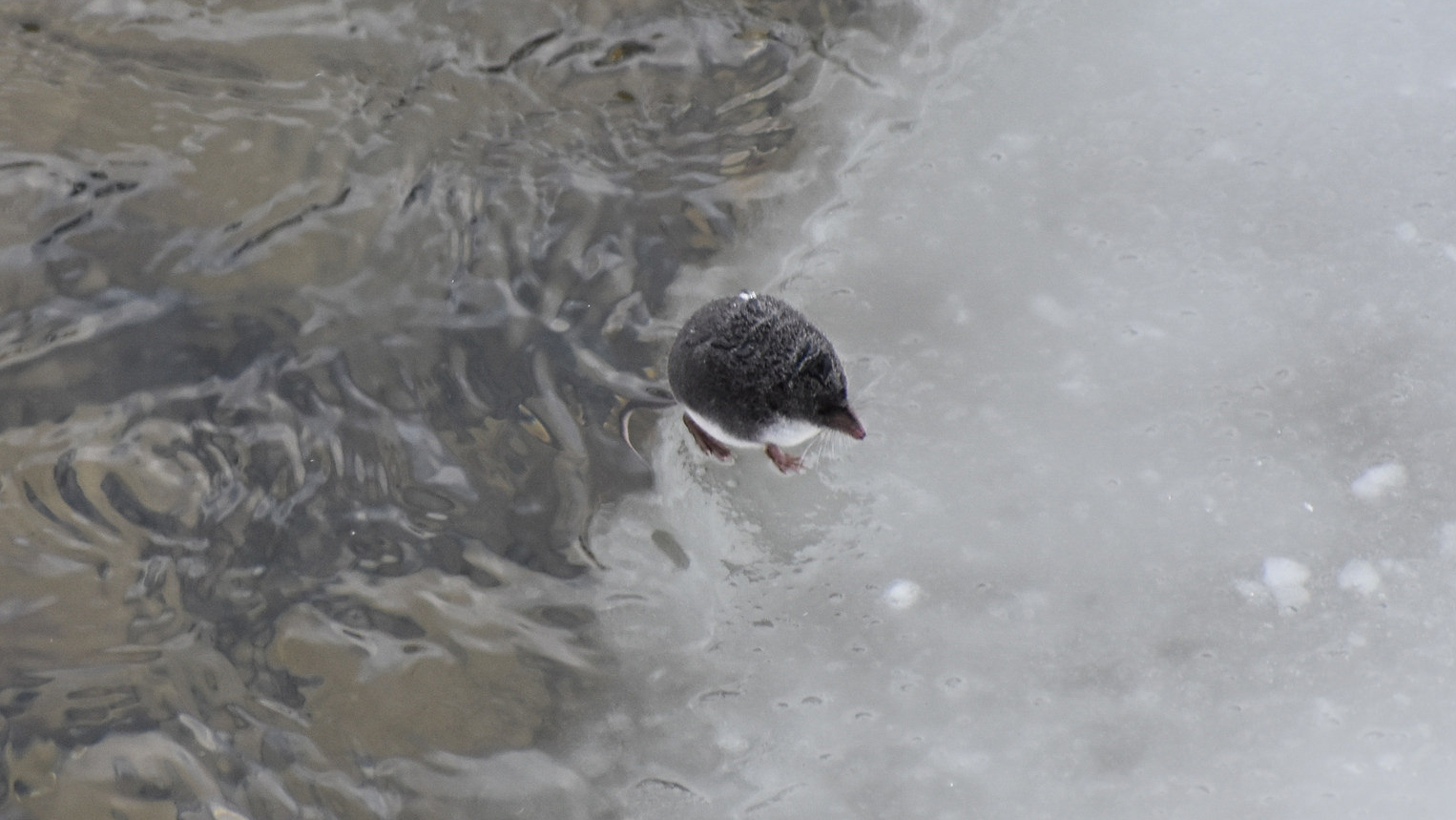
Water shrew on Pebble Creek. © NPS/April Henderson / Flickr You can find a shrew species in just about any habitat. Several species of water shrews even take to streams. The water shrew has stiff hairs on its feet that allow it to scamper across the surface of the water. Its stiff fur also traps air bubbles, allowing it to stay underwater for short bursts. It must stay in constant motion underwater, or it pops back up to the surface. It hunts caddis larvae and other small aquatic prey.
Theodore Roosevelt (yes, the president) observed a water shrew catching a minnow in North Idaho. He described it in his book The Wilderness Hunter: “It was less in size than a mouse, and as it paddled rapidly underneath the water its body seemed flattened like a disk, and was spangled by tiny bubbles, like flecks of silver.”
As a side note, Theodore Roosevelt also kept a shrew in captivity (he fed it a mouse and garter snake) and observed, wrote about and collected shrew species on his lengthy African safari. He even has a shrew species named after him. I’m not surprised that he had a love of shrews, given his accomplishments as a conservationist, naturalist and outdoors enthusiast. I wish for another politician like him nearly every day.
-
The Incredible Shrinking Brain
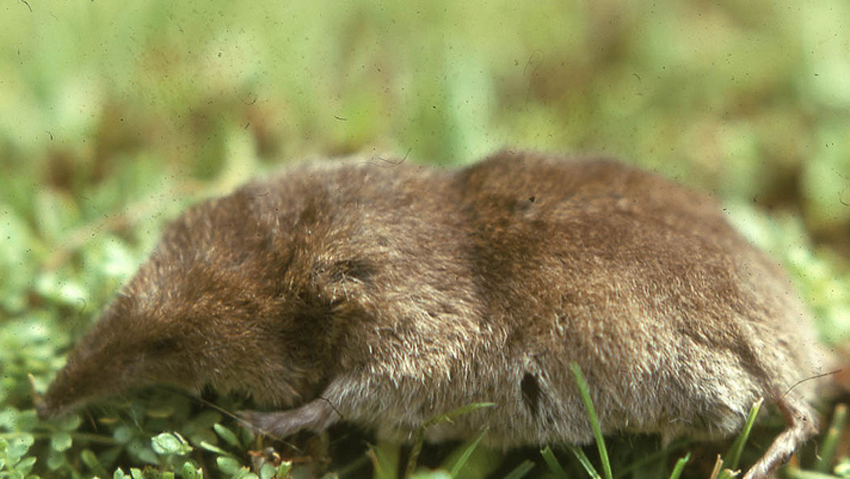
Common shrew (Sorex araneus). Photo © Dr Mary Gillham Archive Project / Flickr through a CC BY 2.0 license Many wildlife species feast and bulk up for the cold winter months. With the shrew’s metabolism, weight gain is not an option. And so at least one shrew species shrinks. A recent study, published in the journal Nature, found that in common shrews in Germany, “Their spines also got shorter, and major organs, including the heart, lungs and spleen, shrank. Even their brain mass dropped by 20–30%.”
Researcher Javier Lazaro hypothesized that “reducing their body mass during winter might increase their chances of survival, because they wouldn’t need so much food.” The brain in particular has high energy requirements, but the study could not determine if shrews experienced decreased cognitive functions.
-
Foxes Hate Them, Trout Love Them
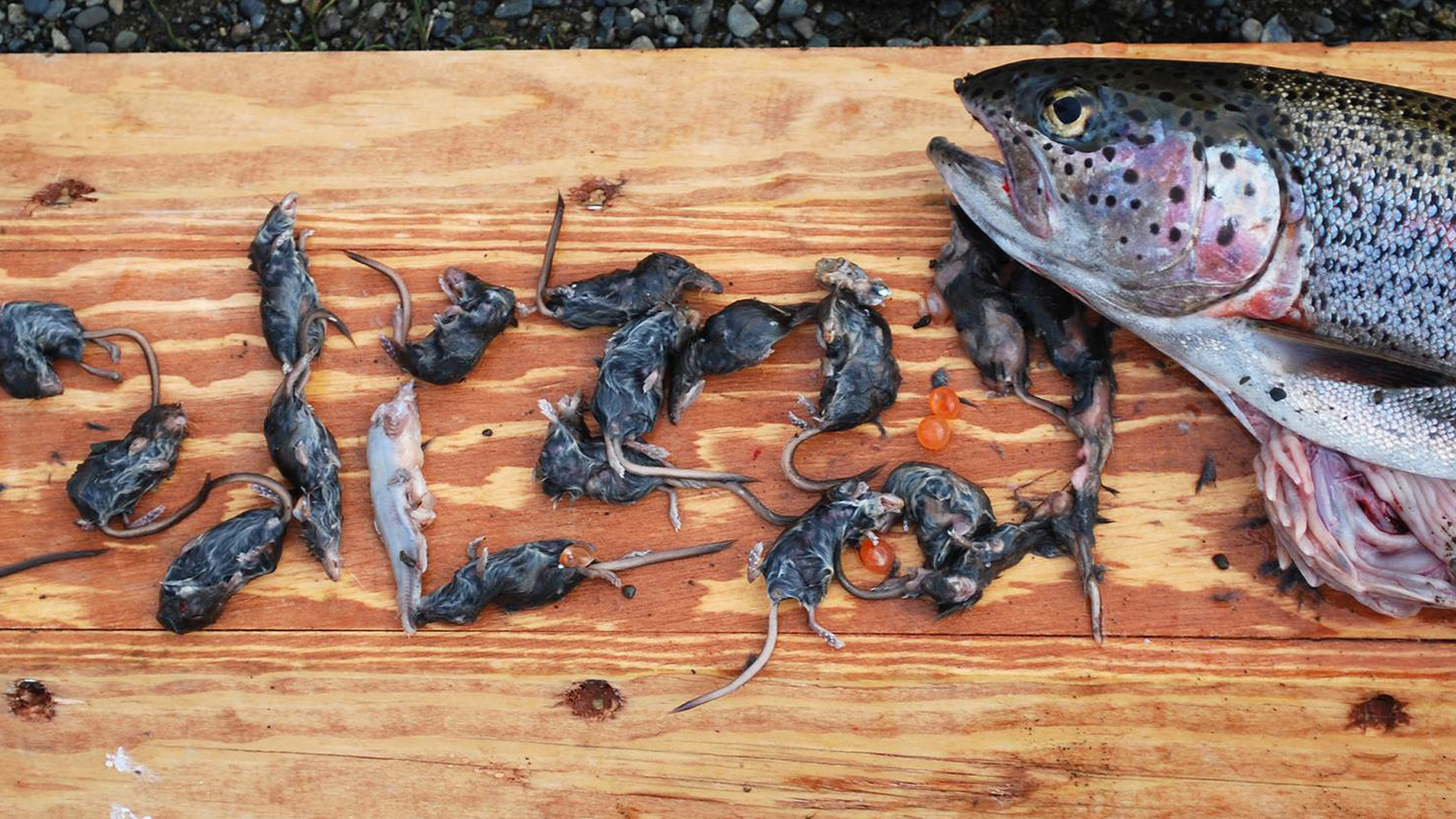
The shrew-eating trout of Togiak National Wildlife Refuge. Photo: U.S. Fish and Wildlife Service. Shrews may be fierce predators, but they’re small, which means they in turn become prey. Many mammalian predators, including red foxes, raccoons and cats, will attack them but rarely actually eat them. That’s because shrews emit an unpleasant musk that some liken to the smell of skunk.
This does not deter other predators, like owls and snakes. But my favorite incidence of shrew predation is a rainbow trout caught at Alaska’s Togiak National Wildlife Refuge that had 19 shrews in its stomach. These were not water shrews, but other species that fell into the water and became prey. You can read the full account in my previous blog.
-
Shakespeare and Shrews

Petruchio (Kevin Black) and Katherina (Emily Jordan) from the 2003 Carmel Shakespeare Festival production at the Forest Theater. Photo © Smatprt / Wikimedia Commons through a CC BY-SA 3.0 license And then there’s the literary work, Shakespeare’s Taming of the Shrew. During my Shakespearean literature class in college, my professor stated that the Bard did not refer to the literal shrew, as such a benign, inconsequential mammal wouldn’t fit the theme of the play.
As a lifelong mammal nerd, this amounted to heresy. I decided to make my final paper for the class a detailed comparison of the real shrew with the literary one. This, in retrospect, was a bit of a gamble. I relied on a store of shrew facts, many of which now appear in this blog.
As I read my professor’s comments on the paper, I could sense that she was initially annoyed at my topic, then became increasingly alarmed as she realized I was quite serious. The paper received an “A”, along with the pointed suggestion that I pursue a career in nature writing as opposed to academia.
And here I am, still sharing shrew facts.
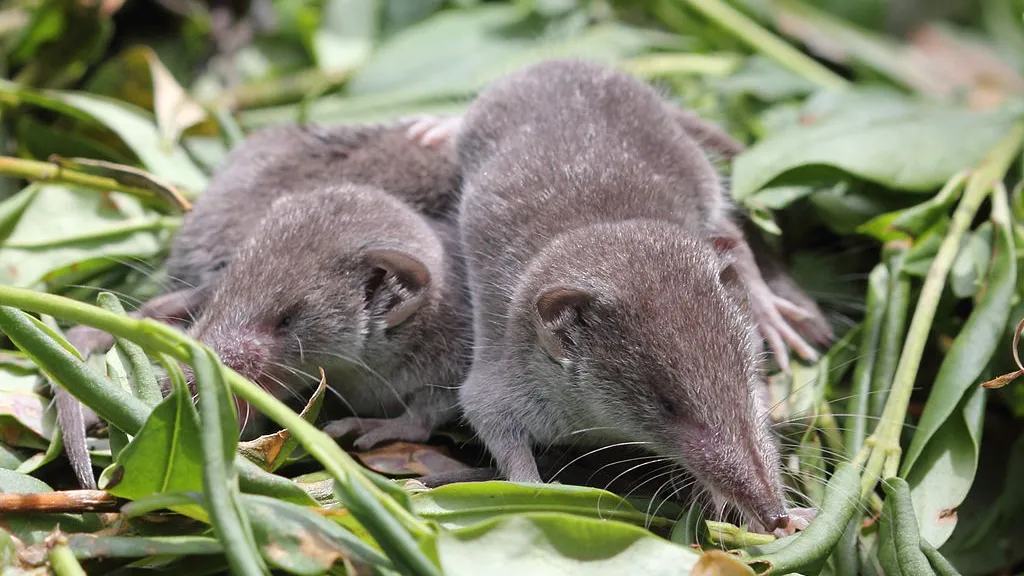



You are such an entertaining writer! My daughter and I were trying to identify a shrew, and stumbled across this article and it made us laugh out loud. It also made us recoil in horror: live hoarding? Absolutely not. No thank you. So that part ruined my day, but I totally enjoyed the rest of it!
Roosevelt was a conservationist, naturalist and outdoor enthusiast?
Definitely an enthusiast but NOT a conversationist.
In his visits to Africa in 1909 Teddy and his son killed 512 animals. Some of these included Lion, Cheetah, Leopard and RHINO etc.
“It made our veins thrill” – Roosevelt
May this planet never see an ignorant president like that again.
Thanks for the rest of this Shrew information though.
Sent out of South Africa.
Thank you the most enlightening article I’ve read about shrews. We have decided to rescue a baby shrew and then let it go. The cat keeps bringing them in.
Best article yet on the topic of shrews — your Prof was prophetic! (Eek I pundit) But seriously, I share your interest in these amazing lil critters — ever since first seeing them dart from under dead foliage to steal nuts/ seeds dropped on the ground when out ‘communing with Nature’.. & scurrying back to safety, often with a prize almost half its size!
Here in BC (& west-coast states I think) the Pacific water shrew is rare & ‘red-listed’, so their main habitats — riparian zones near sluggish streams & marshes — are supposed to be protected & restored. Clearly the BC Govt (source of this info) is derelict in their duties, so I’m compelled to act..
(Any ideas on increasing effectiveness as a steward would be welcome!)
I live in upstate NY. we didn’t really have a harsh wanter, but it is upstate NY, so yes, for many months it’s has been cold and snowy. I am a science fanatic, have an associates in Science, and am a Registered Nurse l, but am more of a nature lover than anything else. I have a grow tent full of tropical bonsai trees and I save every creature that I can. With that being said, I get a lot of mice in my house in the winter. I don’t have the heart to use snap traps, so I have 2 live traps set in my porch at all times, and relocate mice that go into it into the country. To my surprise, one day I looked into the trap and was horrified to see a half eaten mouse and another tiny creature that I thought was a mole. After some research, I found out that it is a Northeastern short tail shrew. She did have an injury, so I obtained a large clear tote, drilled numerous holes for air, filled it with care fresh bedding and a variety of hay and other natural substrate, put in a water bottle that yes, I watch her use and I have her next to my bed in that tote and I take meticulous care of her. She did have a litter of stillborn babies after her capture, but this little creature has won my heart! I literally buy 6 dozen large crickets every few days, have a bowl of mealworms out for her at her convenience, and every morning I call to her and she comes out and I give her a large earthworm. I have picked her up a few times to move her into a small cage while doing cage cleaning. But she has never bitten me, I have named her Shrewby and she comes out of her burrow when I call her. I know that I must release her back into nature once she’s healed and it gets warmer out. But to anyone that says they cannot take a shrew…. Come talk to me. I love this animal!
Melissa Paciolla RN
NEAT